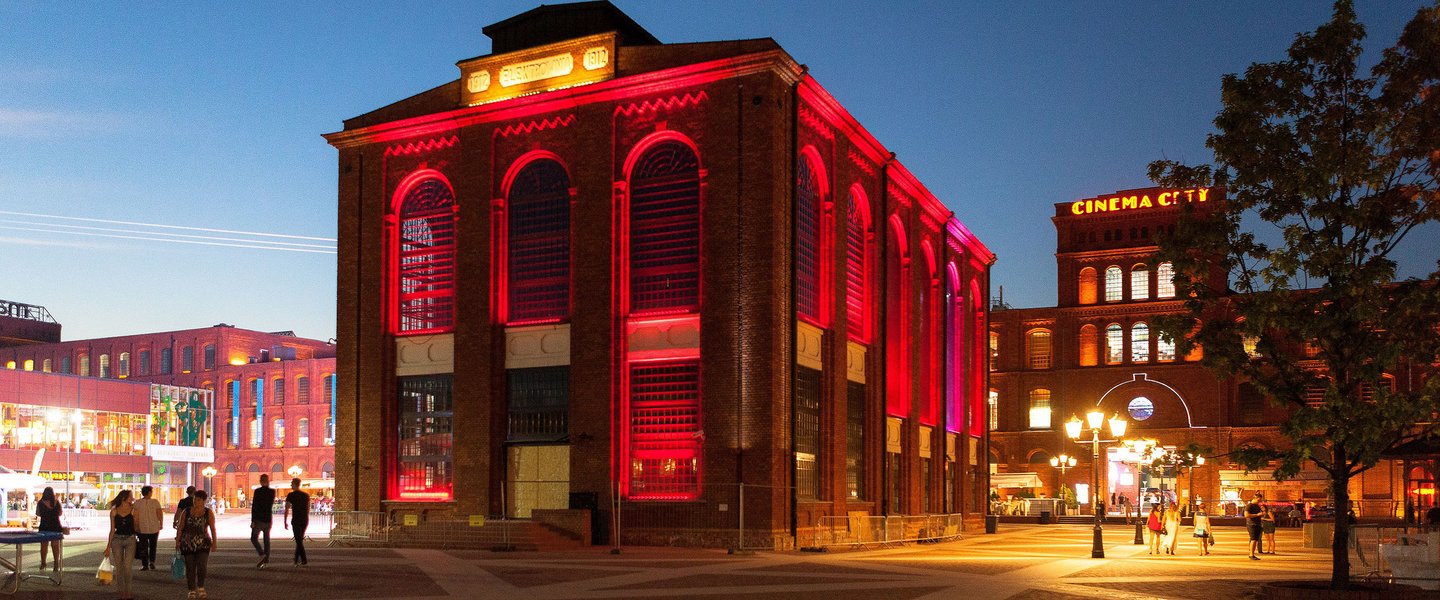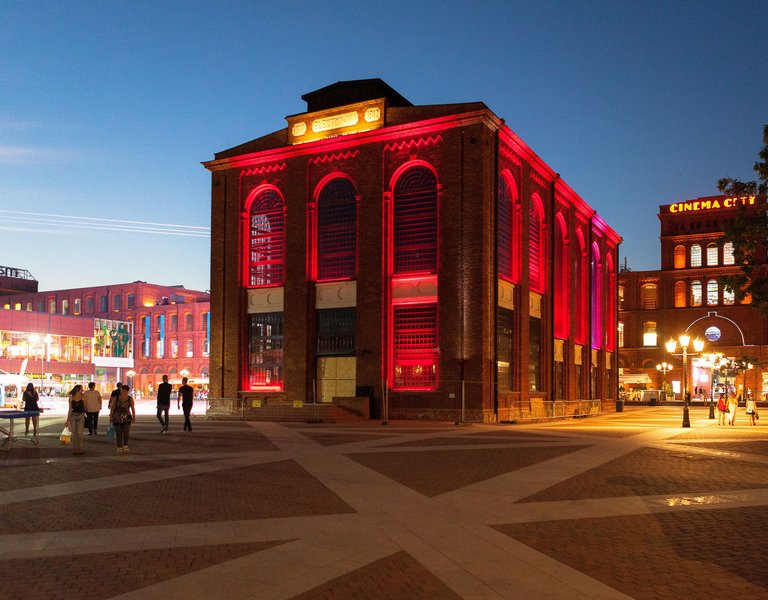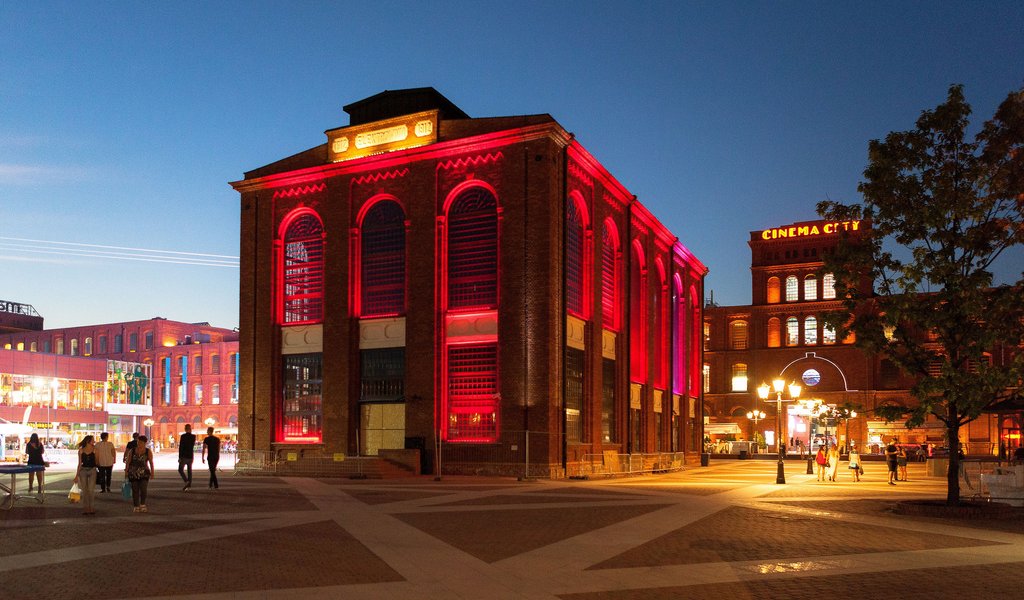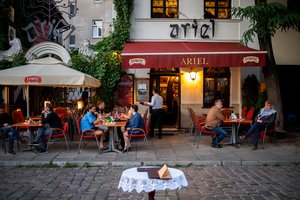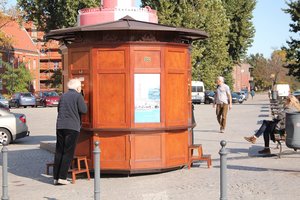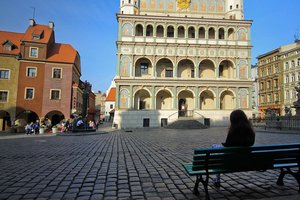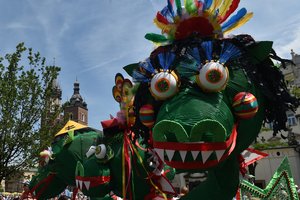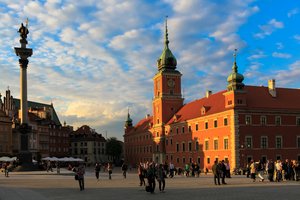Lodz Women's Route. A Walk Guide (Walking time: 2 hours)
It has been a century since Polish women won the right to vote. To mark this occasion, we encourage you to visit Polish cities and follow in the footsteps of Polish suffragettes and social activists. See Krakow, Gdansk, Warsaw, Poznan, Milanowek, Lodz, Konin and Polish villages through the eyes of women who lived there a century ago. This time we invite you to Lodz, a city with the highest feminization ratio (120 women per 100 men), which evolved and developed thanks to the work of women in the, seemingly easy, textile industry.
Historical background
As late as at the turn of the 19th century, Lodz was still a pretty small settlement with less than 100 inhabitants. In 100 years, this number increased 600-fold. The wave of migration to Lodz intensified as a result of social changes and included mainly young women looking for a source of income. Work in textile factories seemed attractive, but it was also very devastating. Yet, the history of the working-class in Lodz is not only the history of tedious work, but also the one of revolutions, strikes and female rebellion. Lodz was the city of avant-garde artists, art precursors, women of literature and outstanding social activists.
1. PLAC WOLNOŚCI 1 (1 Freedom Square)
We start at Plac Wolności (Freedom Square), where Piotrkowska Street begins, marked by the monument of Tadeusz Kościuszko as its centre. This is where the first pharmacy in Lodz was opened. The profession of pharmacist, today strongly feminized, for many centuries was reserved for men, although women, even without formal education, were involved in medicine, e.g. in monastic orders.
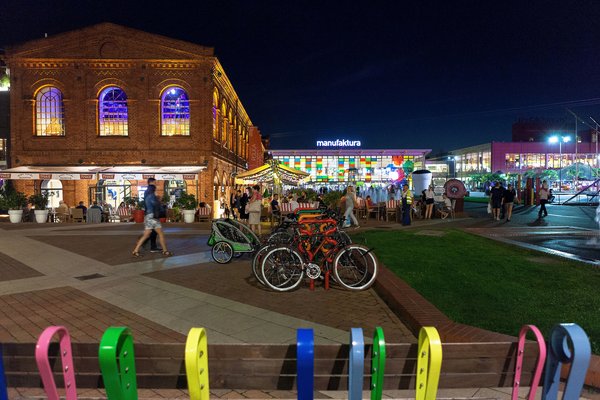 For years women could inherit her husband’s profession, but in the 19th century widows of pharmacists were required to hire pharmaceutical assistants. The pharmacy located at Plac Wolności 7 (7 Freedom Square) (in 1850 moved to the new address: Plac Wolności 2 – 2 Freedom Square) was launched by Karol Ketschon, probably in 1830. Ketschon died six months after it was opened. The town mayor allowed the pharmacy to continue under the direction of its employee, Karol Reiman, but the commissioner of the Łęczycki district annulled the decision on the grounds that Reiman was not qualified enough. The widow after Ketchon, Julia, married Reiman, possibly for the purpose of retaining the title to the pharmacy, but this ‘rescue operation’ failed. The pharmacy was sealed until a new director, a pharmacist salesman, arrived from Warsaw.
For years women could inherit her husband’s profession, but in the 19th century widows of pharmacists were required to hire pharmaceutical assistants. The pharmacy located at Plac Wolności 7 (7 Freedom Square) (in 1850 moved to the new address: Plac Wolności 2 – 2 Freedom Square) was launched by Karol Ketschon, probably in 1830. Ketschon died six months after it was opened. The town mayor allowed the pharmacy to continue under the direction of its employee, Karol Reiman, but the commissioner of the Łęczycki district annulled the decision on the grounds that Reiman was not qualified enough. The widow after Ketchon, Julia, married Reiman, possibly for the purpose of retaining the title to the pharmacy, but this ‘rescue operation’ failed. The pharmacy was sealed until a new director, a pharmacist salesman, arrived from Warsaw.
The Freedom Square is also a place where a trail was blazed for women in the profession of civil law notary. This is where Zofia Hertz, née Neuding (1910–2003), worked, who is known as the co-founder of the Literary Institute in Paris and the close collaborator of Jerzy Giedroyc. She was born in an assimilated Jewish family. Left by her father who set up a new family and neglected by her mother, she depended on the mercy of her relatives who could not afford to ensure her subsistence. She completed secondary education in Lodz and started studying law at the University of Warsaw. In 1929, she was introduced to a civil law notary in Lodz, Apolinary Karnawalski, who offered her a job in his notary office at Plac Wolności 2 (2 Freedom Square). Her knowledge and determination made her the best remunerated employee of the office. She took the exam for civil law notaries and passed it in 1933, but it was not without difficulties, as there were problems for her, as a woman, with getting access to court premises at Dąbrowskiego Square so that she could attend a hearing. Having passed the exam, she became the first female civil law notary in Poland.
2. MANUFAKTURA. Old Factory of Izrael Poznański
We are moving further towards the shopping and entertainment centre called Manufaktura, which is located at the premises of the old cotton factory. Post-industrial buildings from the 19th century made of red unrendered bricks were completely refurbished inside; where one of weaving mills was situated, today there is a gallery of contemporary art owned by the Lodz Art Museum (ms2), displaying the works of Ewa Partum, as well as sculptures by Katarzyna Kobro and Alina Szapocznikow.
In the past, this was a place of hard, three-shift work of weavers. In Lodz, the majority of factory staff were women (approx. 80%), which was a result of cutting down the cost of labour force. The work of women and children was the cheapest, which was further exacerbated later with the mass introduction of machines.
The feminization of textile industry, and of the city, was observed from the 19th century to the transformation of 1989. The leap in the number of female residents was witnessed, for instance, in 1905–1907, namely during the revolution of 1905. The improvement of living and working conditions was among the demands voiced during protests. Apart from pay increases and reducing worktime to 8 hours, it was demanded that hiring young people below 16 years old be prohibited, that bath and medical care be ensured and that libraries, schools and orphanages be opened. It was also requested that midwifes be employed in factories and that employees have six weeks of maternity leave before and after child birth.
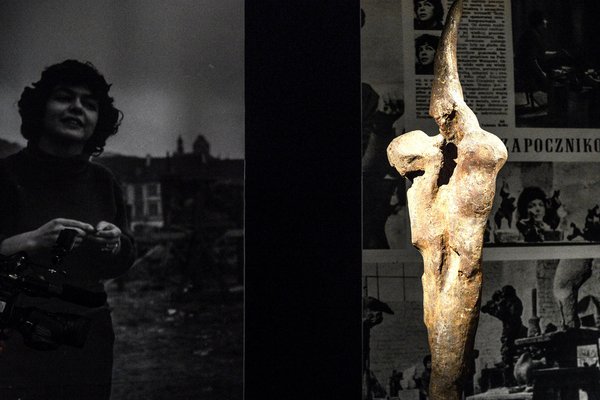 Combining political demands with those of social, economic and dignity-related character happened also during the strikes in textile facilities in 1970s and 1980s., in which female staff members were involved. The protests of the weavers in Lodz were carried out differently – protesters rotated, thanks to which they could go back to their families.
Combining political demands with those of social, economic and dignity-related character happened also during the strikes in textile facilities in 1970s and 1980s., in which female staff members were involved. The protests of the weavers in Lodz were carried out differently – protesters rotated, thanks to which they could go back to their families.
3. 24 ZGIERSKA STREET
Let's go now to Zgierska Street, where during the Second World War, in the Litzmannstadt Ghetto, there lived Alina Szapocznikow (1926–1973). After being deported from Lodz, she was taken to several Nazi German camps (Bergen-Belsen, Auschwitz, Terezin). After the war, having obtained a scholarship, in 1948–1950 she studied at the École nationale supérieure des beaux-arts in Paris. However, serious illness forced her to leave the academy. After returning to Poland, she continued her activity in the field of art. In 1965, the first version of one of her most well-known works was created (‘Multiple portrait’), in which she used the impression of her own face. After the forgotten artist died, her art regained popularity, which is proven, for example, by a solo exhibition of her works in the Museum of Modern Art in New York in 2012.
4. JAKUB STREET (FORMER: ŚW. JAKUBA - ST. JACOB STREET)
Of the entire Litzmannstadt Ghetto, only one building survived to this day. During the Second World War in one of the already non-existing buildings lived Miriam Ulinower, née Hirschbein (1888 or 1890–1944), a poet who wrote, among others, in Yiddish. She was born in a traditional, orthodox family and married a merchant and industrialist, Wolf Ulinower, of a Hasidic family. The married couple ran a traditional house and she brought up her daughters accordingly. This was not an obstacle for her, however, to publish her texts in secular literary magazines issued in Lodz and Warsaw. In 1922 she published a volume of poetry entitled Der bobes ojcer – it was one of the first volumes of female poetry in Poland. In the apartment at Narutowicza Street, she launched a literary salon, where mainly young writers from Lodz and vicinity gathered together. During the war, the Ulinower family was forced by German Nazis to move to the ghetto, but Ulinower organised literary meeting also there. They were attended, among others, by a resident of Lodz, Chava Rosenfarb, who survived the war and is considered the most outstanding post-1945 Yiddish female writer. Ulinower, together with her entire family, was deported to the German Nazi Auschwitz-Birkenau camp, where she died.
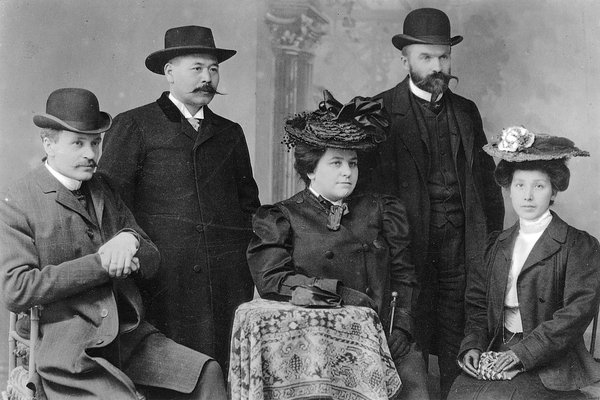 5. 19 WSCHODNIA STREET
5. 19 WSCHODNIA STREET
In the tenement house located here, Maria Piłsudska, née Koplewska, Juszkiewiczowa (1865–1921) by her first marriage, and her husband Józef stayed and printed illegal press.
Her first marriage soon ended up with divorce and Maria together with her daughter Wanda moved to the hometown of Vilnius. Not much later she left the child with her family and went to Warsaw to become involved in pro-independence conspiracy. She was arrested, but managed to avoid the sentence and within administrative proceedings she was only ordered to stay in her place of birth. In Vilnius she was seeing both Roman Dmowski whom she knew from Warsaw, and Józef Piłsudski whom she met in Vilnius. Both men, both fathers of Poland’s independence – competed for her affection. Ultimately, she chose Józef Piłsudski.
In 1899, they married and moved to Lodz, where they rented an apartment at 19 Wschodnia Street, which became a printing office. The address was discovered, the printing office was closed, while Maria and Józef were taken to the Warsaw’s Citadel. After eleven months of investigation, she was released and considered „the victim of love”. Józef, pretending a mental disease, was transferred to a mental hospital, from where he managed to escape.
Poland.pl
Source: "Szlaki kobiet. Przewodniczka po Polsce emancypantek", Fundacja Przestrzeń Kobiet, Krakow 2015.
Special thanks are due to the Fundacja Przestrzeń Kobiet (Women’s Space Foundation).
22.03.2019
